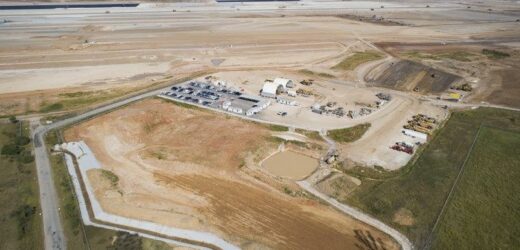Faced with the decimation of the CBD and the disappearance of thousands of international students and migrant workers, in recent times Victorians’ eyes have been focused on the crippling cost to the state’s economy from the pandemic.
But there’s a big medium-term threat coming that we need to start thinking about: Sydney’s second airport.
Western Sydney Airport is due to open in late 2026.Credit:Wolter Peeters
The Western Sydney Nancy-Bird Walton International Airport is on track to open in 2026.
Why does it matter? With its 30 per cent of the market, Melbourne’s Tullamarine is currently the centre of international air freight in Australia. Before COVID, $16 billion in international freight moved through it annually, which was worth $4 billion to the state Victoria, underpinning 28,000 jobs.
Melbourne Airport bills itself as the freight hub for Australasia, with two major drawcards: it operates 24/7 and has unrivalled arterial road access.
That’s true. Sydney Airport has a curfew between 11pm and 6am restricting arrivals and departures. It also deters airlines from scheduling landings close to those times because if planes aren’t on time they have to choose between diverting them to another city or paying a fine of up to $1 million.
Unsurprisingly, the new Western Sydney airport will be curfew-free and operate 24 hours.
As for our unrivalled airport road access?
The Western Sydney airport will have that too, thanks to a serious roads infrastructure spend. It will also be close to existing logistics centres and the surrounding land is zoned for more. It will be adjacent to an agribusiness precinct (as well as an advanced manufacturing, research, medical and commercial hub).
Just by being located in the middle of the Brisbane-Sydney-Melbourne golden triangle, it will have a major geographic advantage over Tullamarine.
Melbourne Airport currently bills itself as the freight hub for Australasia. Credit:Paul Rovere
But wait, there’s more. Nancy-Bird Walton is also set to have a rail link from its opening date.
Who’s paying for all this? Victorians are – at least in part.
The airport is being developed by a federal government-owned entity, with the Commonwealth committing more than $5 billion. Canberra and the NSW government are also jointly funding the connecting railway line.
This should come as no surprise.
Dominic Perrottet and Scott Morrison at the Western Sydney Airport construction site in November.Credit:Dominic Lorrimer
For decades NSW has been better than Victoria at getting cash out of Canberra under both Labor and Coalition governments, not only because it has more seats but because many more of them are marginal.
There is no doubt over the medium-term our share of the freight market and consequently the Victorian economy is going to take a hit, with the employment impact likely to be felt strongly in the northern suburbs.
To get an idea of the scale of the economic threat, you only have to look at the volumes of freight Nancy Bird is aiming at handling. In 2016-17 Melbourne Airport handled 277,000 tonnes of international freight. The first stage of the new Sydney airport is set to process 220,000 tonnes a year, with the ability to scale up to 1.8 million tonnes as demand grows.
And it will.
Artists impression of designs for the Western Sydney International airport passenger terminal.
The freight industry is deeply committed to the project. It has been a part of the airport design process since 2019, with 12 of the key players including Qantas Freight, Toll and Australia Post, now signed up to a memorandum of understanding with Western Sydney Airport.
As the then federal Population, Cities and Urban Infrastructure Minister Alan Tudge said, “The airport is being built not just for 2026 but for the next century”.
Given all this, you have to wonder why the Victorian government hasn’t said a word about how it will stem the flow north. The lack of plan to date suggests a deep complacency about our northern neighbour.
It’s easy to see why. From the corruption of Eddie Obeid to its struggles with privatisation and local government reform, successive NSW governments appeared incapable of state shaping reform. The decades taken to get the second Sydney airport underway is another example.
But it has become clear in recent years, that when it comes to state government we have lost our competitive advantage. Having finally sold a majority stake in electricity assets for close to $23 billion, NSW is comparatively cashed up and is, as then premier Gladys Berejiklian said, “poised to enter a new golden age of infrastructure delivery”.
While Victoria’s Big Build is about meeting the needs of a growing population, Restart NSW is all about improving “the state’s economic growth and productivity”. Dominic Perrottet has made clear not only is he an “Infrastructure Premier” but he is deeply focused on improving productivity and growing the NSW economy.
Unfortunately here in Victoria there is less room to manoeuvre with debt already expected to soar to almost $200 billion, making us the most indebted state in the country.
Quietly NSW has positioned itself for the future. The airport is the biggest example of how Sydney is set to eat our lunch in the next few years.
It won’t be the last.
Roshena Campbell is a Melbourne City councillor and barrister. She is a member of the Liberal Party. The views expressed are her own and not those of Melbourne City Council.
Most Viewed in National
From our partners
Source: Read Full Article






